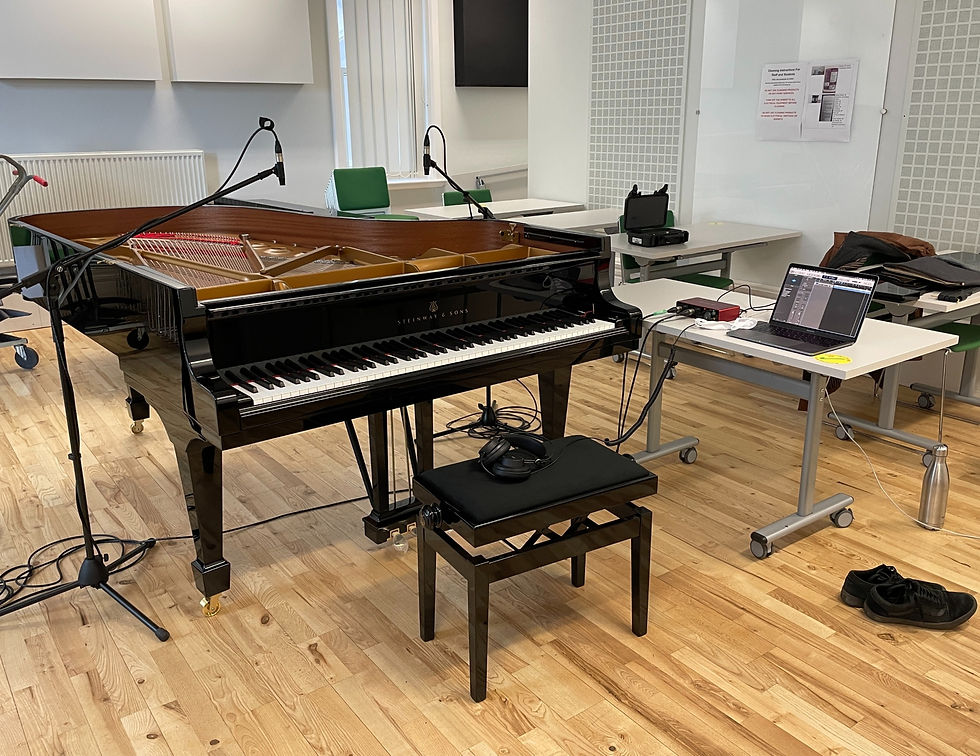Editing and Exporting Samples
- thomaslongshaw7
- May 4, 2021
- 3 min read
Updated: May 24, 2021
Having separated the takes into three logic sessions, I loaded up the softest layer and began to edit my samples. I will document this process once though the same process was used on the other two layers.
Normalising the Samples
I started by normalising the audio file so that it would playback at the highest volume without clipping, allowing me to hear any imperfections in the take that may have needed work. It was essential that I waited until the takes were joined together before normalising the audio, as otherwise each sample across the range of the piano would playback at the same volume and sound unnatural.


Noise Reduction
I had decided from the beginning that I didn't want to use large amounts of noise reduction on my samples, as I've experienced this poorly implemented in some commercial sample libraries and it has ruined the character of the instrument. Having said this, from briefly testing my samples in EXS24 after recording, it became apparent that I would need remove some room noise, as there was a prominent hissing noise as samples stacked up.

In my previous post, I mentioned that I had also recorded 30 seconds of room noise. I loaded this into my editing session and used Logic's Noise Suppression Expander to reduce the noise. This worked well on the isolated noise recording, however, after copying the same settings onto the samples I found it cut out some key frequencies and ruined the sound.

After researching noise reduction plugins that are commonly used in the creation of sample libraries, I came across Waves' X-Noise and was impressed with the results. X-Noise allows the user to loop a section of the track so that the plugin can learn what background noise to omit. I decided to try it on my Logic session, first allowing the plugin to learn from the room noise and then copy its parameters onto the audio file containing the samples. The outcome was unparalleled to the original recordings, though I slightly reduced the strength of the plugin to avoid omitting any important frequencies.
Cutting & Trimming the Samples
After applying the noise reduction, I went through and cut each sample into individual files. This was a quick process, as when I recorded I had used a metronome to ensure the start of each sample would be on the first beat of a bar. I exported these files and loaded them into EXS24.

I used EXS24 to trim the beginning and ending of each sample to ensure there was no gap between hitting a key and the note sounding. After this, I went through each note to listen for troublesome samples. When I came across a sample I wanted to omit, I deleted it and adjusted the note above it to cover both keys. Following further testing, I decided to also remove the bottom and top octaves from the middle velocity layer as they were rarely being triggered and this would help reduce the storage taken by my instrument.
Once I was happy with the samples, I renamed each according to its MIDI note number and added the extensions: .1, .2 or .3 depending on the velocity layer. I then exported sample individually, which was an extremely time-consuming process; this is one of the few major flaws of EXS24, as it doesn't allow you to batch export samples.




Comments